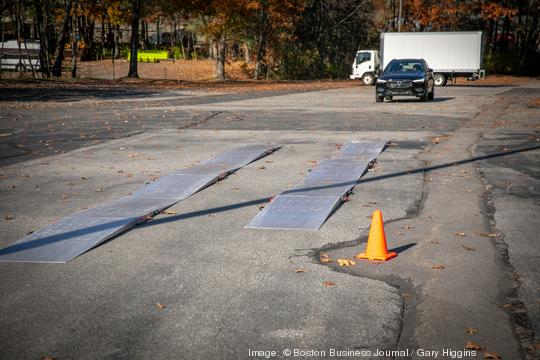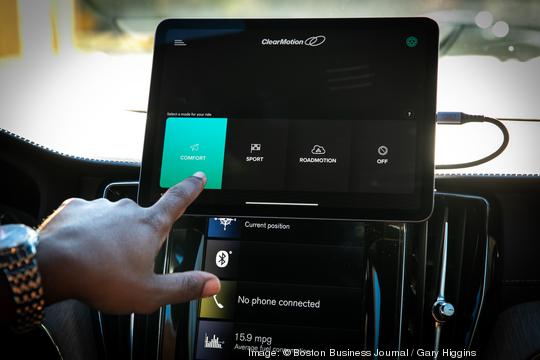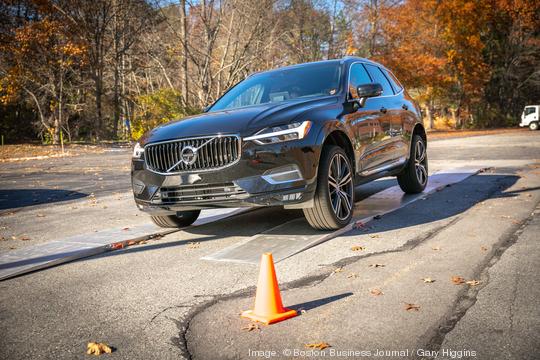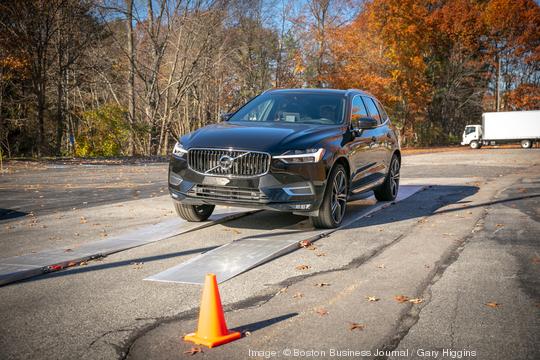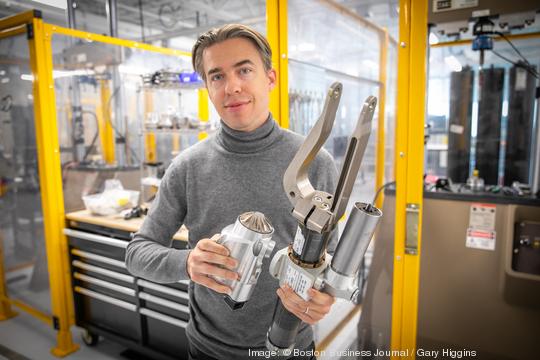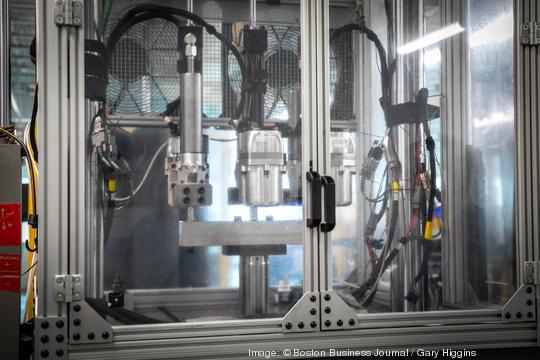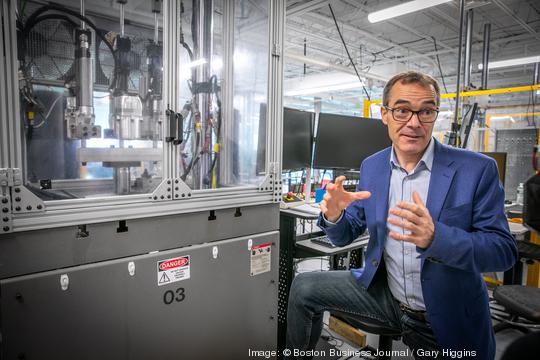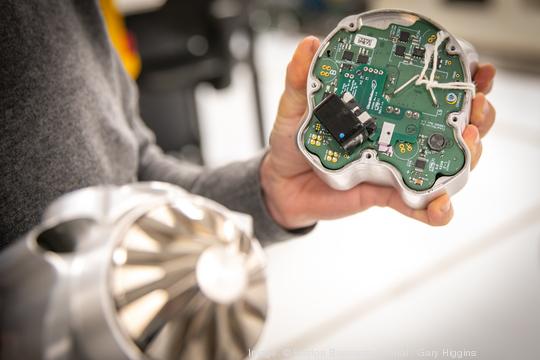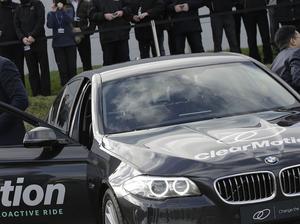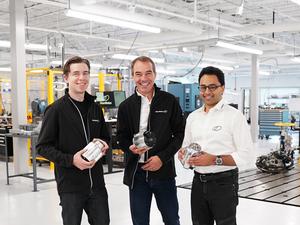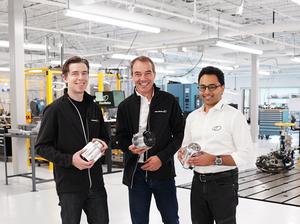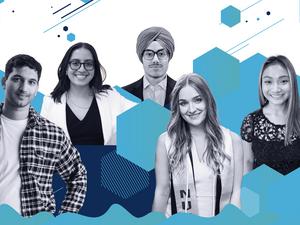On an early-November afternoon, I sat in the passenger seat of a test vehicle for what a car enthusiast might consider their dream field trip. ClearMotion, a company developing new active suspension technology, had invited me in for a test drive in the lot behind its Billerica headquarters.
The company’s software-controlled actuators are touted as a big improvement over traditional shock absorbers. The device can tame the in-car experience by eliminating unwanted motion from bumps and turns. It can even add motion to coincide with in-car entertainment: Picture sitting inside your electric car as it charges and watching a movie while your car tilts and jumps to coincide with action in the film.
On this day, the ClearMotion team had set up a mini-obstacle course for our test ride. Two rows of bumps were laid out in the parking lot behind the office building. The company’s goal was to let the bumps send me, the passenger, rocking from side to side as we drove through the course with the technology turned off — that is, the equivalent of regular shock absorbers. Then, they would turn on ClearMotion’s technology and see how big a difference it made.
After buckling up, the driver sped up to 10 miles per hour and hit the first bumps. While they only looked to be a few inches tall, I was unprepared for the jostling and immediately slid toward the side of my seat, my head bumping against the door and my car keys slipping out of the bag on my lap. My body immediately braced to control my movement. The first drive through the bumps, without ClearMotion’s technology, was convincingly uncomfortable.
For round two, our driver hit a button on a touch screen to turn on ClearMotion’s fast-acting actuators. It was noticeably much smoother: I could feel the car going over something, but it didn’t cause me to move in my seat at all. Our driver said that's the intention: Too smooth a ride would make passengers feel too disconnected from the vehicle.
The bumps on this test drive were larger and more frequent than what one would typically encounter on the roads — even in Boston. But the test drive made its point: This company’s technology certainly seems to give drivers and passengers a much smoother ride.
On the flip side, ClearMotion’s technology can also be used to add motion to the car. Our driver popped on a clip from Fast & Furious 7 where a car flies and crashes through several high-rise buildings. Every turn and crash were mirrored in ClearMotion’s car as it sat in a parking spot, tilting and bumping in place.
This technology is coming soon to a car near you. After a few years of working under the radar, ClearMotion said it has secured its first customer and will launch its technology in its first cars in 2024.
An early pivot to 'the in-car experience'
ClearMotion was founded in 2009 by Zack Anderson, now co-founder and CTO, and Shakeel Avadhany. At first, the team wanted to generate energy from cars traversing off-road terrain, Anderson told me as we sat in a conference room after the test drive. But around the same time, autonomous technology was starting to catch on thanks in part to the rise of Uber, and more people began talking more about the in-car experience while driving.
“We saw that, and we thought we had some insights in how we could actually stabilize motion to make the cabin of the car a productive environment. A place where you don’t get motion-sick. A place that’s entertaining and safe,” Anderson said.
Anderson admitted the company's suspension technology was a bit early when the company began focusing on it in 2012. But developments in driving technology over the last two years make it the perfect time to launch their product, he said.
ClearMotion has raised around $300 million to date — including $39 million in September — and as of this month, had around 90 employees worldwide. CEO Christian Steinmann, a former executive at automotive manufacturer Continental AG who joined ClearMotion in 2019, said the company aims to have 100 employees by the year’s end.
Anderson said much of the company’s component-level engineering and software work is done in Greater Boston. Meanwhile, vehicle engineering is centered in the United Kingdom (where ClearMotion has an office on a test track) and the company is now opening a China office which will focus on application engineering and initial manufacturing work.
The current size is less than half of what it was three years ago. In September 2019, ClearMotion’s headcount was 206 people. A month later, the company laid off 34 workers. At the time, Steinmann said that the layoffs were part of a restructuring intended to better serve the needs of the company’s customers in Europe. Steinmann said the company had one more round of layoffs earlier this year. When it became clear that ClearMotion would focus on its commercial launch with one customer, Steinmann said the company let go of employees who were working on other customer setups to focus on its 2024 launch goals.
“Next summer we’re going to actually build the first parts in China. Even ahead of that, we have quite a few inquiries from others,” Steinmann said.
